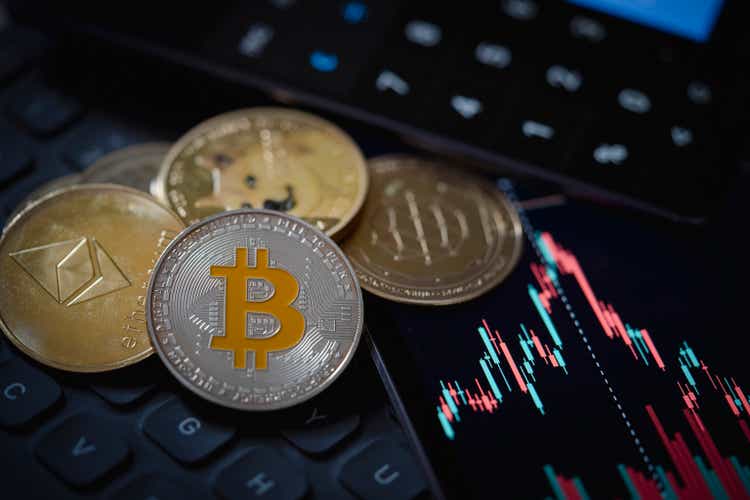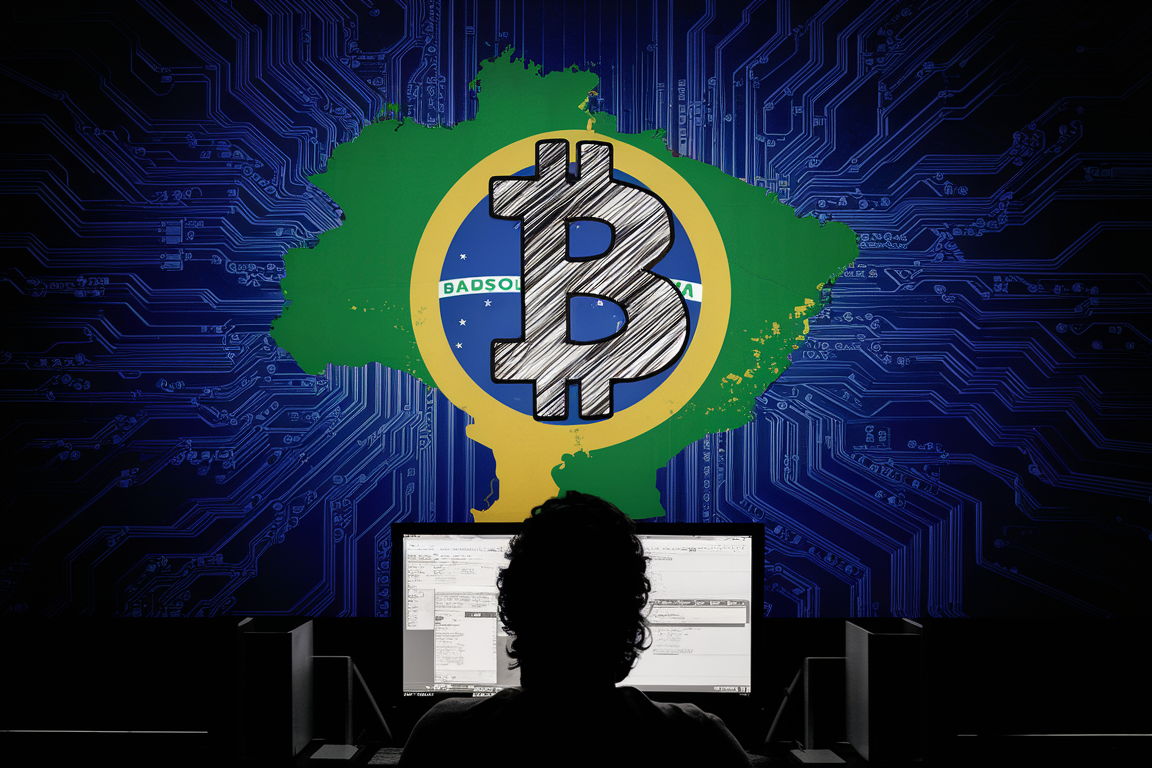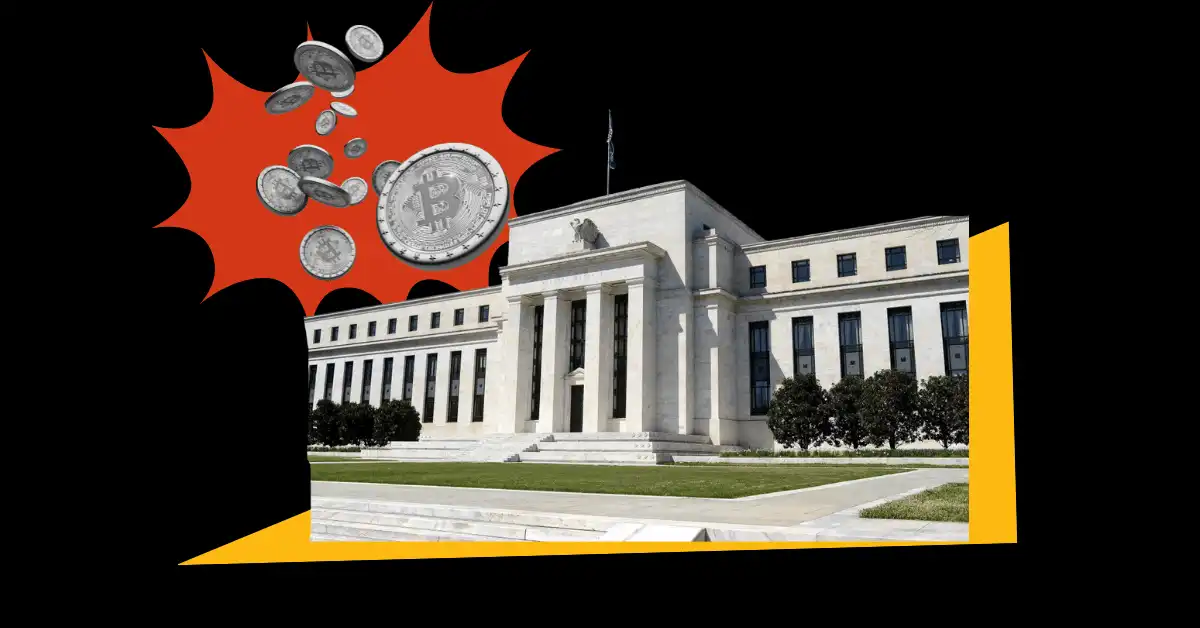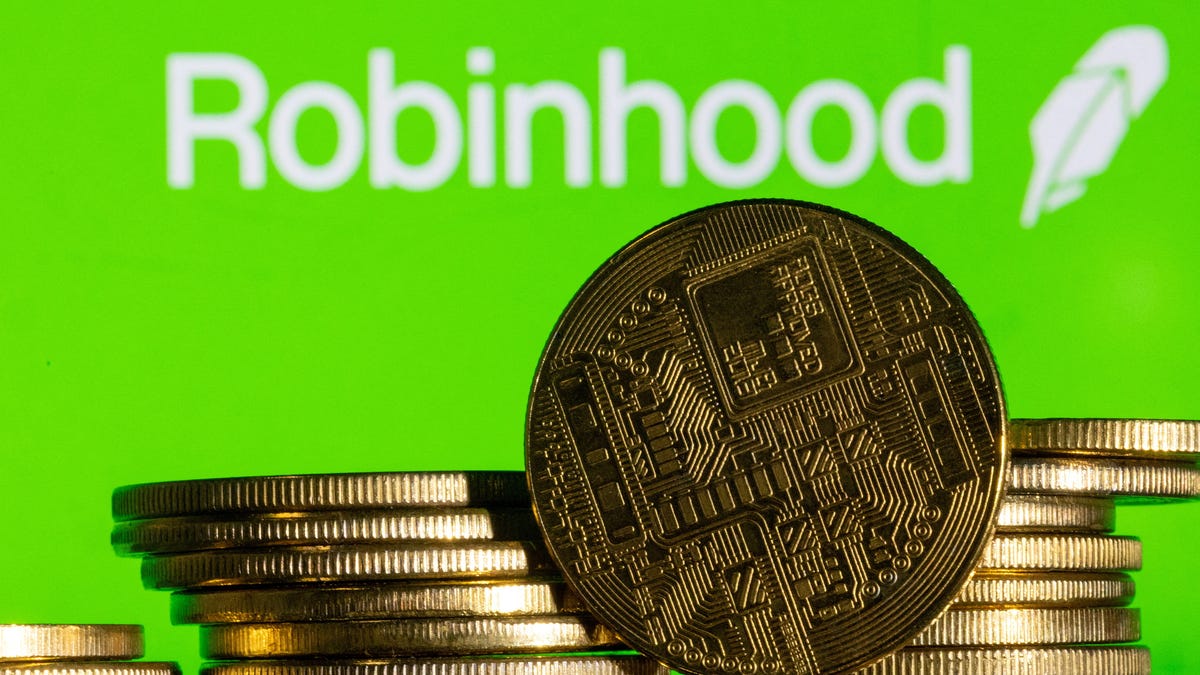Crypto
What Family Offices Should Know About Digital Assets Going Into 2024

Digital assets span far beyond bitcoin and NFTs.
Next year will mark fifteen years since the launch of Bitcoin, and the original cryptocurrency has had a rather wild ride in that time, much like the entire digital assets industry itself. It only crossed the $1 value two years after it launched, which is hard to imagine considering its peak value of over $68,000 just a few years ago.
At the end of an inauspicious year that brought us the rapid demise of NFT valuations, a guilty verdict and potential 110-year prison sentence for the former CEO of one of the top three largest cryptocurrency exchanges and a guilty admission, $4.3 billion in fines and resignation from the CEO at the largest cryptocurrency exchange, it’s surprising to see the original cryptocurrency is sitting at a current eighteen month high of over $39,000.
But there has simultaneously been a significant amount of evolution that also occurred in the digital assets industry during this time, and looked at from a broader perspective, there is certainly a fair point that like any rapidly developed ecosystem it will need to be shaped by some of its failures on its way towards mass adoption.
Finding Mainstream Utility
“The current state of the crypto market is one of transition,” says Coindesk’s Todd Groth, who is Head of Index Research at CoinDesk Indices, adding the explanation, “The leverage and excesses of the previous market cycle have been mostly cleared and new products push towards developing greater real-world utility and catering towards regulated institutional investors.“
One of the more trusted crypto media and data providers, Coindesk made the news itself recently after being acquired by Bullish, a regulated and audited crypto exchange. Run by former New York Stock Exchange President, Tom Farley, Bullish was created with the long-term institutionalization of digital assets in mind, something that Groth believes is in gaining rapid momentum.
“This institutional ‘coming of age’ for the market comes alongside a good year of Bitcoin and Ethereum performance, despite the ending stages of a U.S. interest rate hiking cycle,” says Groth, adding that, “The performance during the bond bear market helps support the narrative of Bitcoin and Ethereum as real assets, similar to digital gold and oil respectively.”
The acquisition puts Coindesk on a good path but also sends a message of optimism to companies that provide digital assets solutions to investors. Benaiah Capital is a boutique investment firm that focuses exclusively on digital assets and emerging blockchain technology, and CEO Ben Wiener believes activity like the Coindesk acquisition benefits the entire market.
“Additional investment has a multiplying effect as it recruits top talent which further expands the space and queues up the next round of investment,” Wiener notes, adding, “I’m optimistic that this will lead to improved coverage, analysis, and education about digital assets.”
Certainly necessary in an evolving space like digital assets, and no doubt useful to Benaiah, which Wiener notes takes an educational approach first and spends a significant amount of resources keeping their family office clients updated on the shifting market.
“We’ve witnessed a notable shift in sentiment among family offices in the last 6 months,” he adds, “Many of them have moved from cautious observers to actively exploring and investing in this space, which suggests it’s highly likely to continue into 2024.”
Easier Access, Tighter Regulations
Something destined to make headlines in the new year and perhaps behind some of the current increasing value in Bitcoin is the impending January approval of spot Bitcoin Exchange Traded Funds. Another step towards accessibility to the digital asset pool for institutional investors and sure to see large amount of capital deployed, it does come with some in the industry cautioning that it could result in lesser-established cryptocurrencies slipping further off the radar, and the potential for a sudden dip in valuation on the day of launch.
As part of the institutionalization, a more solid framework of regulations is emerging which looks set to address some of the volatility and cautious sentiment. This might also help prevent some of the recent turmoil and scandals related to exchanges such as FTX and more recently Binance.
Wiener believes this may be the transformation that digital assets need to shed the often speculative perception, and should open the market to new investors. “In 2024 we anticipate a maturation of the market with clearer regulations and a broader range of investment options,” Wiener says, “This belief in shift is one of the reasons we’re seeing family offices starting to become so active in the space, as their confidence increases as a result.”
Cross-Functional Products
One of those broader range of investment options and a contributing factor to confidence is the growth in secure tokens and specifically stablecoins. The market for stablecoins, cryptocurrencies that are pegged to another asset, commonly a traditional fiat currency, is expected to grow. As their unique structure offers the benefits of decentralized digital assets with the largely greater stability of traditional currency, they offer a gateway of sort to those looking to explore digital assets.
PayPal just released PYUSD stablecoin just over three months ago, which instantly made it available for individuals using their payment service as well as their network of over 29 million merchants the ability to transact using their stablecoin. Pegged to the Dollar and issued on Ethereum blockchain, it will be interesting to observe how it trades over the next year, though it’s far from the first established financial services company to release a stablecoin: JPMorgan’s JPM Coin has been in use since 2019 and handles over $1 billion of transactions daily.
Further Digitization
While the hype around Non-Fungible Tokens (NFT) definitely dropped hard this year, with many collectible tokens reduced to zero value. But tokenization as a whole still offers huge potential, a potentially $10 trillion market by the end of the decade. The integrating of real assets into the digital asset space, through tokenized shares, real estate, art and other assets creates new levels of liquidity and ownership opportunities previously unavailable – that is if the market-hindering lack of trust for tokens can progress.
The year ahead will also see investment opportunities on the legal side, as smart contracts that use blockchain technology explore how to reduce costs and simplify some the elements of financial, real estate and other complex transactional agreements. There are a number of startups exploring smart contract management platforms, an exciting addition to the digital asset space.
A Sleeping Bull?
While the digital asset market is certainly more mainstream than it has been before, at this point many assets are still speculative and volatile, and with regulatory efforts imminent but not yet clearly framed it, the year ahead for the market is expected to be positive but undoubtedly with a few surprises thrown in given the rate of evolution.
“The speed at which this market is about to move and the impact it will have will resemble what we witnessed with the internet,” says the Benaiah CEO when asked about how he believes family offices should view the market.
No doubt family offices need to work with experienced industry advisors in order to take advantage of the many opportunities the current digital asset market presents, while dealing with the unique compliance challenges they face and balancing their ever-present generational wealth preservation goals.

Crypto
Crypto Deposits to Chinese Drug Producers' Addresses Double in Early 2024 Compared to 2023

Blockchain intelligence firm TRM Labs has revealed that cryptocurrency deposits into crypto addresses linked to Chinese drug precursor manufacturers more than doubled in the first four months of 2024 compared to the same period in 2023.
In 2023, Chinese precursor networks received over $26 million in cryptocurrency, with 97% of the over 120 manufacturers studied offering payment options in digital currencies.
Bitcoin Dominates Transactions
According to TRM Labs, the overall amount of cryptocurrency deposited into wallets linked to these manufacturers increased by more than 600% from 2022 to 2023.
Bitcoin remains the dominant cryptocurrency used for these transactions, accounting for approximately 60% of the total payment volume. Following Bitcoin, the TRON blockchain saw about 30% of transactions, while Ethereum was used for roughly 6%.
The report also highlighted that 11 manufacturers were responsible for over 70% of all crypto-denominated sales of drug precursors. These manufacturers receive funds from unhosted wallets, cryptocurrency exchanges, and payment services, with their wallets most commonly hosted at exchanges.
In addition to the preference for cryptocurrencies, Chinese manufacturers also accept fiat currencies through platforms like PayPal, MoneyGram, Western Union, and traditional bank transfers.
The report revealed that Chinese drug precursor manufacturers mainly target countries including Canada, the Netherlands, Australia, Germany, and the United States. Advertisements have also been directed towards Russia and neighboring countries, particularly for mephedrone precursors.
China’s Role in The US Fentanyl Crisis
A U.S. congressional committee recently reported that the root cause of the U.S. fentanyl crisis lies in the People’s Republic of China, which manufactures over 97% of the precursors used in the global illicit fentanyl trade.
According to the report, China subsidizes the production of illicit fentanyl precursors, which has significantly contributed to the opioid crisis in the United States.
“The CCP has had this program in place since at least 2018. At that time, they subsidized at least 17 illegal synthetic narcotics that are Schedule I controlled substances, including 14 deadly fentanyl analogues.”
The committee found that China provides value-added tax rebates to companies manufacturing fentanyl analogs and other synthetic narcotics, provided these products are sold outside China.
Another September 2023 report by blockchain intelligence firm Elliptic also uncovered a network of 100 individual suppliers facilitating the illicit fentanyl trade. Elliptic noted that these suppliers use cryptocurrencies, particularly Bitcoin, Ethereum, Tron, and Monero, to conduct transactions and facilitate the transfer of funds from buyers to suppliers.
Binance Free $600 (CryptoPotato Exclusive): Use this link to register a new account and receive $600 exclusive welcome offer on Binance (full details).
LIMITED OFFER 2024 at BYDFi Exchange: Up to $2,888 welcome reward, use this link to register and open a 100 USDT-M position for free!
Crypto
Cryptocurrency startup funding surpasses $100B (Cryptocurrency:BTC-USD)

bizoo_n
Cryptocurrency startups have drawn over $100B in total funding since 2014, as per data compiled by DeFiLlama, with $3.54B raised up to May this year alone amid a surge in bitcoin (BTC-USD) and other digital tokens.
DeFiLlama is an aggregator that tracks the crypto sector’s total value locked – or the total U.S. dollar value of digital assets locked, or staked, on a particular blockchain network via decentralized finance platforms.
According to the data, since 2014, crypto startups have seen a total of 5,287 funding rounds that have raised in total $101.36B. October 2021 was the best month in this time period, with over $7B raised.
Earlier this year, crypto industry news and research outlet The Block said the total, all-time dollar amount invested into crypto and blockchain-related companies exceeded $90B in February. The firm cited funding data for startups that it tracked since 2017.
The $100B milestone comes a few months after the crypto industry received a shot in the arm from the U.S. Securities and Exchange Commission’s (SEC) long-awaited approval of spot bitcoin (BTC-USD) exchange-traded products in January.
Not long after, bitcoin (BTC-USD) surged to a record high north of $73,000 in March, though it has since retreated after its last halving on April 19, 2024. Halving events reduce the rate at which new coins are created and thus lower the available amount of new supply.
For investors that want to track bitcoin (BTC-USD) focused funds, here are some names to look at: (IBIT), (GBTC), (FBTC), (ARKB), (BITB), (HODL), (BRRR), (BTCO), (EZBC), and (BTCW).
More on Bitcoin and Crypto
Crypto
The emergence of cryptocurrency as a global currency

It is worthy of note that in the past decade the whole financial-sphere has changed drastically due to the appearance of cryptocurrencies. While in the beginning they were treated simply as a curiosity for hackers and anarcho-capitalists, disruptive to the contemporary financial systems and on the cusp-of becoming a global currency, digital currencies have developed at an incredible pace.
Cryptocurrency began is said to have begun in 2009 when an unknown person or group, or group of people going by the pseudonym Satoshi Nakamoto launched Bitcoin. The blockchain technology which forms the foundation of Bitcoin brought efficient, unprejudiced, secure, and IMMEDIATE means for doing business without relying on traditional financial institutions. This advancement embodied the prospect of cheaper transaction costs, faster transaction clearing as well as better anonymized layer two solutions that in return would create a large and diverse set of users and investors.
Since the inception of Bitcoin, thousands of other digital currencies, [also known as altcoins] appeared that aimed to be different in certain ways. As for Ionic, founded in 2015, Ethereum advanced the use of blockchain through implementing smart contracts— the execution of the conditions of the contract stated through code. This development led to decentralized applications or dApps and helped drive the adoption of cryptocurrency even more.
When cryptocurrencies started to become relevant in the world economy, they recommended its functions. What were once regarded as cryptocurrencies that have high risks involved in trading them same digital currencies are now being accepted because of change they bring to different sectors.
First, financial Inclusion. Despite the current volatile nature of some of the virtual currencies, cryptocurrencies provide banking facilities to the financially excluded and neglected sections in today’s growing world especially in the developing world. Even through an ordinary mobile phone and internet, people can work, borrow, and transfer funds globally, and largely without incurring any costs.
Second, unlike the hawala system, the formal remittance services are expensive in terms of the commissions they charge and may also take 1–5 days to complete the transaction. Cryptocurrencies also proved to be more efficient than the traditional form of financial remittance and highly efficient since workers can instantly transfer money to their families anytime with very low charges.
Third, in places where hyperinflation is a worrisome problem, cryptoassets proved to be a safe haven for value. While fiat money is inclined to facing such problems as inflation due to the policies made by governments, many cryptocurrencies have their agreed limits on the number of coins to be in circulation.
Fourth, the major trading corporations have started to involve the cryptocurrencies in their activities. Many companies such as Tesla and Square have begun integrating bitcoin into their payment system, while others such as PayPal and MasterCard have planned to adopt blockchain technology for their operations in supply chain, security, and others.
Fifth, regarding the increasing role of cryptocurrencies, several central banks are in the process of creating their digital money. CBDCs intend to foster the advantages of DC’s to the stability and reliability of Fiat currencies and bring about effective mix of traditional and digital finance.
However, before cryptocurrencies can become a popular medium of exchange that operates seamlessly in the global market as a worldwide currency or a unit of account, there are numerous challenges they are yet to overcome.
First, governments around the world have been having great difficulty in how to control such currencies. While certain countries either promote the usage of this technology or encourage innovation in this domain, other countries simply set high barriers of entry or ban it outright. To this end, it is imperative that there is a coherent and consistent framework of rules in the market that would address the matters of security and fraud prevention in addition to encouraging the development of new services.
Second, and probably more seriously, many cryptocurrencies are infamous for their price fluctuations, which can negate their suitability as a reliable means of payment. Stable coins that are cryptocurrencies stabilized using other stable and less risky assets such as the U. S dollar are a good solution here, but adoption and the level of trust is still in the process of building.
Third, although, the underlying technology of bitcoin and other digital money systems or ledger technologies is very secure, abuses of the broader ecosystem of cryptocurrencies include hacks, scams, and cons. It is imperative that the system is designed to include improved security features and a strong support system to safeguard the interest of the users.
Fourth, is the number of individuals using cryptocurrencies increases, that automatically translates to puts pressure on the blockchain networks. There are currently solutions under development, like layer 2 protocols and shards, that will enable Ethereum to cope with high transaction rates while maintaining transaction velocity and security.
Cryptocurrencies in general and Bitcoin in particular’s journey to become a global currency is an evolving process, replete with innovation as well as opportunities and risks.
Some of the motivational factors include the following; With technological enhancements and changes in the regulatory framework, digital currencies are likely to revolutionize the financial sector by enhancing its efficiency and making it more accessible and adaptive.
Although the prospects are still foggy, the emergence of cryptocurrencies is an unambiguous trend, which hints at the organization of society by combining the linear and logarithmic financial models.
Disclaimer
Views expressed above are the author’s own.
END OF ARTICLE
-

 News1 week ago
News1 week agoIsrael used a U.S.-made bomb in a deadly U.N. school strike in Gaza
-

 World1 week ago
World1 week agoFrance to provide Ukraine with its Mirage combat aircraft
-

 World1 week ago
World1 week agoWorld leaders, veterans mark D-Day’s 80th anniversary in France
-

 World1 week ago
World1 week agoRussia-Ukraine war: List of key events, day 833
-

 News1 week ago
News1 week agoNonprofit CFO Accused of 'Simply Astonishing' Fraud
-

 Movie Reviews1 week ago
Movie Reviews1 week agoInsane Like Me? – Review | Vampire Horror Movie | Heaven of Horror
-

 Politics1 week ago
Politics1 week agoGeorge Clooney called White House to complain about Biden’s criticism of ICC and defend wife’s work: report
-

 Politics1 week ago
Politics1 week agoNewson, Dem leaders try to negotiate Prop 47 reform off California ballots, as GOP wants to let voters decide







/cdn.vox-cdn.com/uploads/chorus_asset/file/25272949/retro_67_sharge_verge_sean_007.jpg)










